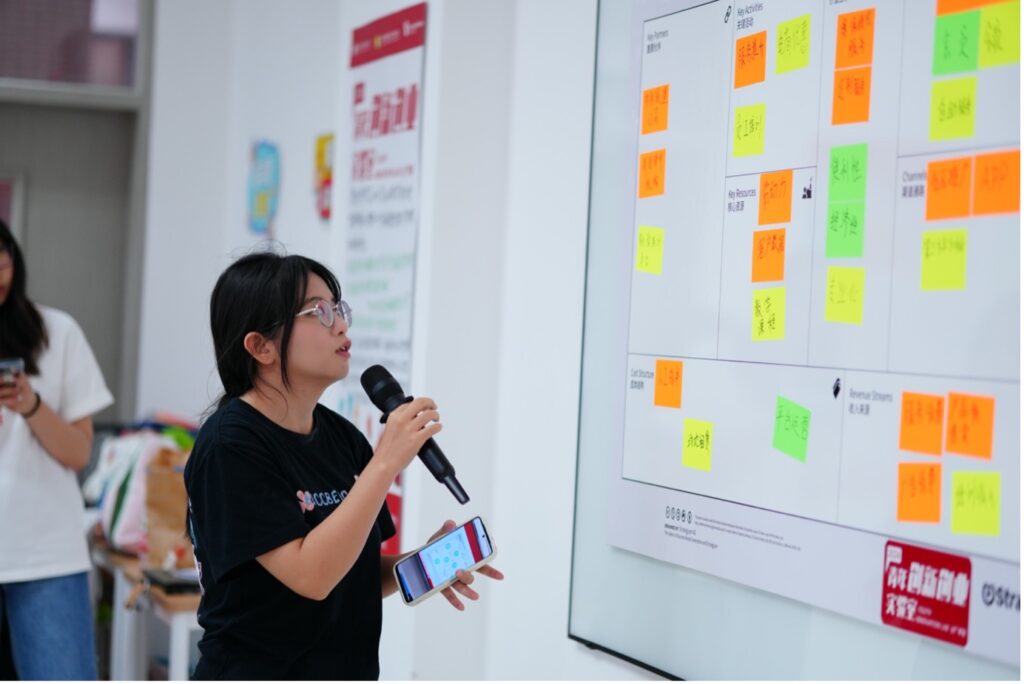
The Problem and Motivation Behind
“When I started this project, my teammates and I only had rough ideas about home care for the elderly… We were all social work students, and we didn’t know how to make it work from an industry perspective.” – Kexin.
Kexin Huang (20-year-old) and her team are social work students. As a part of her practical training, Kexin did an internship at a nursing institution, where she noticed a growing number of elderly people who needed home-based care. They prefer to remain in their homes, but they families often struggle to find trusted and affordable care services. It is a clear gap in care services that motivated Kenix and her team to think of innovative solutions to address this need.
The Innovative Solution
“We wanted to build a platform that links people with spare time, like housewives, to elderly people who need short-term care services at their homes.” Kexin.
When Kexin and her team joined the Youth Innovation Lab, they chose to address the gap of lacking trusted and affordable care services for elderly people at their homes. They used the Design Thinking process to identify possible solution to this problem. They began the by identifying the needs of elderly people through field visits and interviews. They then mapped potential caregivers who could be part of the solution, such as women and housewives with spare time. They brainstormed different ideas to connect elderly people with potential caregivers in their neighbourhood.
They developed a prototype of “Community Aunt” —a digital platform to connect elderly people in need of home-based care with community members who can be caregivers in the neighbourhood. This platform enables community members to offer flexible, trustworthy care services to elderly people, creating a network of support and reducing the burden of care services on families. To financially sustain their platform, Kexin and her team also added offering income generating services, such as selling household products.
Kexin and her team received positive feedback on their prototype from both elderly people and community members, which encouraged them to explore opportunities to implement this solution. The team managed to register a business license for their platform and develop part of its software, but they stopped developing it and remained a prototype.
Lessons Learned and Addressing Challenges
“After participating Youth Innovation Lab, our idea got better and better. Our project became more comprehensive .. Mentors’ experience saved us a lot of time on research, and their advice was more valuable than we could have gotten on our own.”
Through their participation in the Youth Innovation Lab (YIL), Kexin and her team received Design Thinking training and guidance from mentors, which helped them refine their idea, making it more practical and competitive in the existing care services market. Reflecting on the experience, Kexin shared how it also had a profound impact on her own path. “This project helped me realise what my major truly means… It’s not just about coursework—it’s about doing something that matters to your community,” she said.
Reflecting on their learning, Kenix identified two key lessons learned:
- The need to sustain interest and commitment within the team: A major challenge for the team was maintaining momentum after graduation. As members, including Kexin, transitioned into internships and post-university life, their team lost essential human resources and could no longer progress with the same energy. This highlighted the importance of bringing in new, younger members to the team to sustain interest and commitment among team members.
- Forming a more diverse team could have enabled them to develop their platform: One of the most significant challenges the team faced was the lack of technical skills needed to develop their digital platform. Coming from backgrounds in literature and social work, they found it difficult to translate their ideas into functional software. Although one teammate had some relevant knowledge, they could only take the prototype partway. As one team member reflected, “I think what we lacked the most is technical skills in developing digital platforms… our team were mostly literature and social work students. Designing software was very difficult.” This experience highlighted the need to build diverse teams or seek external support early on in the development process.
Next Steps and Future Aspirations
“In the future, I may not have the energy to manage it. So, I will pass this project to my juniors and let them develop it and see how far they can go.”
The Community Aunt platform remained a prototype, but Kexin is hopeful about its future. he plans to mobilise younger students in her department to join her. Her vision for the future includes continuing to serve the elderly through social work and possibly returning to the Community Aunt platform when resources and time allow. For now, she hopes the project will grow with the new team members.